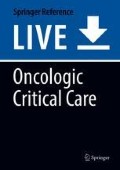Abstract
Laryngeal cancer is the second most common form of head and neck cancer. The main objective of a laryngectomy is to achieve a cancer cure; however, maintaining good speech and swallow functions is very critical to the patient’s quality of life. While laryngeal preservation is preferred, at times the best oncological and functional outcome might involve removing the entire larynx.
Depending on the extent of involvement, a total or partial laryngectomy might be performed. Sometimes if there is regional metastasis to the surrounding lymph node, a radical neck dissection can be performed as well. Although there has been a steady decline in laryngeal cancers related to alcohol and tobacco abuse, the increase in human papillomavirus infection has caused a steady increase in the United States and other western countries. Radical neck dissection is indicated when there is an involvement of the sternocleidomastoid muscle, internal jugular vein, or spinal accessory nerve and cervical lymph nodes. The perioperative care of patients undergoing either a partial/total laryngectomy or a radical neck dissection requires adequate planning and knowledge of each step of the perioperative phase.
References
Bailey B, Johnson J, Newlands S. Head and neck surgery otolaryngology, vol. 2. 4th ed. Philadelphia: Lippincott Williams and Wilkins; 1998.
Cyrus K, Manolis H. Prevention of complication in neck dissection. Head Neck Oncol. 2009;1:35.
Ercan P, Abdulkadir I, Caglar C. Supracricoid partial laryngectomy: analyses of oncologic and functional outcome: otolaryngology-head and neck. Sage Journals 2012. https://doi.org/10.1177/0194599812457334
Gino M, Rosario M, Giuseppe C, Fortunata M, Staffieri A. Current opinion in diagnosis and treatment of laryngeal carcinoma. Cancer Treat Rev. 2006;32:504–15. www.elsevierhealth.com/journal/ctrv
Maurizi M, Almadari G, Ferrandina G, Distefani M, Romanini M, Cadoni, Paludetti G, Scambia G, Mancuso. Prognostic significance of epidermal growth factor receptor in laryngeal squamous cell carcinoma. Br J Cancer. 1996;74:1253–7.
MacLachclan, Ferson D, Pytynia K, Diaz E, Nguyen N, Botnick W. Perioperative care of patients with head and neck cancer.
Naveed B, Eadaiun C, Gerard L, Patrick S. Hypocalcemia after total laryngectomy. Laryngoscope. 2013;124:1128–33.
Pasha R, Golub J. Otolaryngology head and neck surgery: Clinical references guide, 4th ed. Plural publishing; 2014.
Herman R. Staging of laryngeal and hypopharyngeal cancer: value of imaging studies. Eur Radiol. 2006;16:2386–400.
Scott W, Cobb R, Pang L. Post-operative wound infection in salvage laryngectomy: does antibiotics prophylaxis have an impact? Eur Arch Otorhinolarngol. 2012;269:2415–22.
Shanthi M, Forastiere AA. Head and neck squamous cell carcinoma: update on epidemiology, diagnosis, and treatment. Symp Neoplastic Hematol Med Oncol. 2016;91(3):386–96.
Prakash S, Rapsang A, Kumar S, Bhatia A. Postoperative hypertension following radical neck dissection. J Anesthesiol Clin Pharmacol. 2012;28(1):121–3.
Sophia N, Jihane B, Mohammed, Chihab M, Rkain I, Jalila B, Mohammed B, Abdelillah Q, Essakalli L. Evaluation of post laryngectomy pharyngocutaneous fistula risk factors. Iran J Otorhi. 2016;28(2).
Sternson KM, Brockstein B, Ross M. Epidemiology and risk factors for head and neck cancer. https://www.update.com/contents/epidemiology-and-risk-factors-for-head-and-neck-cancer. 2018.
Zbairen P, Becker M, Liang H. Staging of laryngeal cancer: endoscopy, computed tomography and magnetic resonance versus histopathology. Eur Arch Otorhinolaryngol. 1997;254:117–22.
Zhoa, Jin T, Wang HG. Treatment and prognosis of patients with recurrent laryngeal carcinoma: a retrospective study. Head Neck Oncol. 2015;5(2):10.
Author information
Authors and Affiliations
Corresponding author
Editor information
Editors and Affiliations
Section Editor information
Rights and permissions
Copyright information
© 2019 Springer Nature Switzerland AG
About this entry
Cite this entry
Uzoigwe, P.A., Pollard, M., Williams, U.U. (2019). Head and Neck Surgery in Oncologic Patients: Laryngectomy and Radial Neck Dissection. In: Nates, J., Price, K. (eds) Oncologic Critical Care. Springer, Cham. https://doi.org/10.1007/978-3-319-74698-2_159-1
Download citation
DOI: https://doi.org/10.1007/978-3-319-74698-2_159-1
Received:
Accepted:
Published:
Publisher Name: Springer, Cham
Print ISBN: 978-3-319-74698-2
Online ISBN: 978-3-319-74698-2
eBook Packages: Springer Reference MedicineReference Module Medicine

